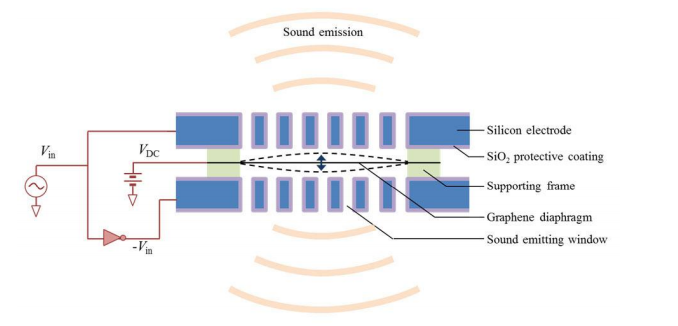
The world’s first electrostatically driven graphene speaker matches or outperforms commercially available earphones, say physicists.
Most loudspeakers work using a diaphragm that creates pressure waves in air by mechanically vibrating. “For human audibility, an ideal speaker or earphone should generate a constant sound pressure level from 20 Hz to 20 kHz, i.e. it should have a flat frequency response,” say Qin Zhou and Alex Zettl who are both at the University of California, Berkeley.
Today, these guys unveil an earphone-sized speaker that more or less matches this requirement. What’s unusual about this speaker is that the diaphragm is made from a few layers of graphene, the carbon chicken-wire material that is revolutionizing everything from transistor design to particle physics experiments.
The new speaker is simple. It consists of a graphene diaphragm sandwiched between a couple of electrodes that create an electrical field. When this field oscillates, it causes the graphene to vibrate too and this generates sound.
What’s extraordinary about the new device is its performance. “The graphene speaker, with ...
Continue HERE






